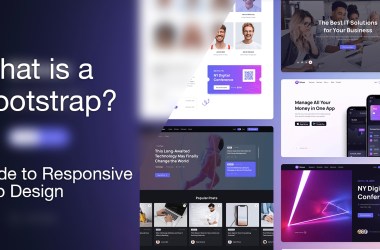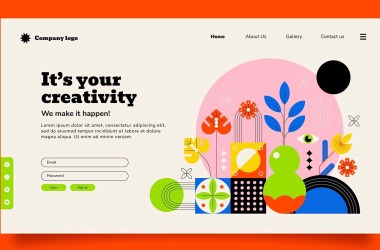Updated: Dec 23, 2024 By: Marios

In 2024, the mobile app market saw 257 billion downloads, highlighting its vast potential and consumer demand. For startups and small enterprises, developing an app has become a critical move for customer engagement.
Although it might seem daunting financially, particularly for newcomers, developing a robust, user-friendly app can be affordable. With the right strategies, you can achieve a balance between functionality and cost-efficiency.
Here are some crucial strategies for building a quality mobile app while keeping costs in check. From employing no-code platforms to launching a pared-down version of your app, these guidelines assist in an economical development journey without sacrificing important features app.
Use a No-Code/Low-Code Platform to Build Your App
A highly effective way to cut app development costs is by using a no-code or low-code platform. Using these tools allows you to build mobile app and simplify the creation process, letting you concentrate on app design without deep coding skills.
With ready-made components and intuitive interfaces, you can implement complex features app without a large development team. This approach significantly reduces development time and the financial resources typically allocated to coding.
For those with limited tech skills, no-code platforms provide a fast track to app creation and deployment. Low-code platforms require some programming but offer more customization. Choosing a platform that fits your project’s needs can streamline mobile app development, particularly for beginners. This strategy allows you to allocate your budget to more technical aspects like performance enhancement or user experience trials.
Define Your Core Features Early On
It's critical to plan your app’s primary features app early to stay within budget. New developers often extend development time by incorporating optional features app. To prevent this, clearly identify the essential functionalities your app will provide. Focus on the unique solutions your app offers to users and how it stands out, keeping development sharp and cost-effective.
Simplifying your app’s features app also ensures it remains user-friendly, avoiding complex processes that can confuse users. With fewer components to test and optimize, testing and debugging are streamlined. By concentrating on necessary functions, you not only save money but also improve user engagement.
Select the Best Technology Stack for Your Requirements

Choosing an appropriate technology stack is crucial for controlling development costs. For example, creating a native app for iOS and Android separately can be expensive. A more economical choice might be using a hybrid framework like React Native or Flutter, which allows you to operate across multiple systems with minimal code adjustments.
Hybrid development frameworks also have extensive libraries and tools, making it easier to add functionalities and handle app updates. This approach minimizes the time developers spend on redundant tasks and ensures optimal app performance across different devices.
By selecting a technology stack that matches your project’s goals and resources, you balance costs and performance, preparing your app for sustained success.
Outsource Strategically
Contracting parts of your project can be a cost-effective method to acquire specialized skills without the need to employ full-time developers. You could hire freelancers or agencies for certain tasks like UI/UX design, backend integration, app localization, or quality assurance, which can lead to more efficient task completion due to their specialized experience.
However, successful outsourcing hinges on clear communication and specific project objectives. Begin with a comprehensive description of the requirements for each contracted role. Regular updates and meetings ensure the project stays on track and within budget. Strategic outsourcing allows you to handle various project aspects while keeping budget flexibility.
Launch an MVP First
Introducing an MVP can be a cost-effective tactic, especially when exploring new ideas or functionalities. By concentrating on the core functions and key features app of the app, you save on development time and expenses. This initial release gathers early user feedback, helping you identify what appeals to users before further investment.
With instant feedback from users, you can focus on updating and refining features app that are actually desired by the audience. This feedback-based approach helps avoid unnecessary development that could inflate costs and delay your launch. Additionally, an MVP allows you to test your app's potential in the market. After evaluating user interest and the app's effectiveness, you can better plan future steps, such as enhancing features app or expanding your user base.
Stay Flexible and Plan for Iterations
In the app development process, flexibility is crucial, especially for first-time app builders working with limited resources. Accept that your app will likely evolve based on user feedback and market demands. Planning for iterations helps keep your initial development scope narrow, which, in turn, keeps the costs manageable. It’s easier to budget for future updates and enhancements if you’ve launched an MVP and obtained early feedback.
Iteration planning also helps you avoid costly last-minute changes by organizing your project into manageable stages. By taking an iterative approach, you can address bugs, add features app, and make performance improvements gradually, based on what your users need and want. This strategy prevents overspending on features app that might not be essential at launch, and it keeps you agile in the face of changing user preferences.
Conclusion
Building a mobile app on a budget is possible with the right strategies. By using a low-code platform, defining essential features app, choosing an efficient tech stack, outsourcing wisely, launching an MVP, and planning for future iterations, you can create a functional, engaging app without stretching your resources thin. Following these steps not only helps you stay within budget but also ensures that your app development journey is efficient, productive, and rewarding.



